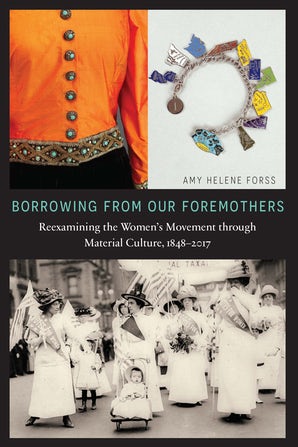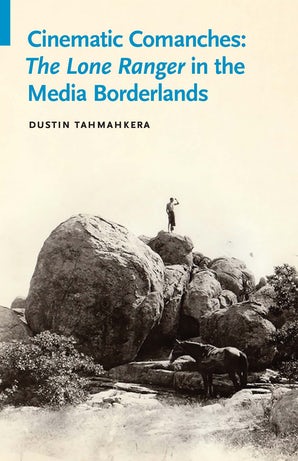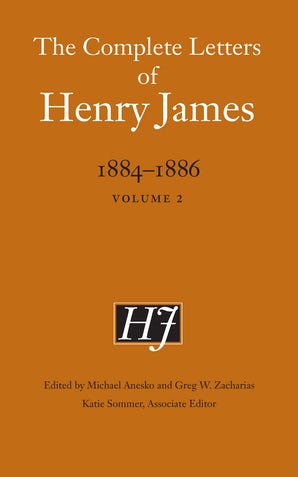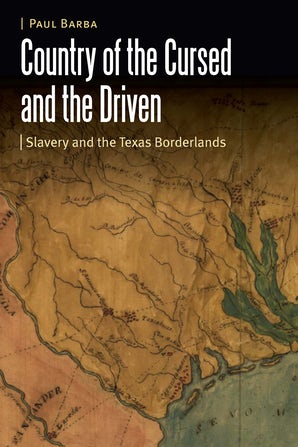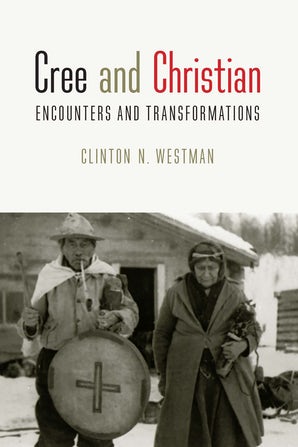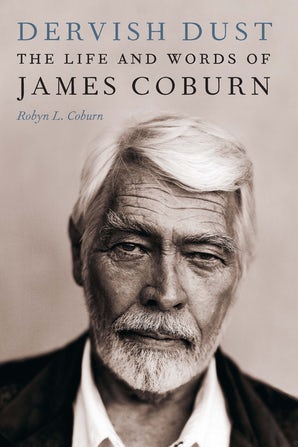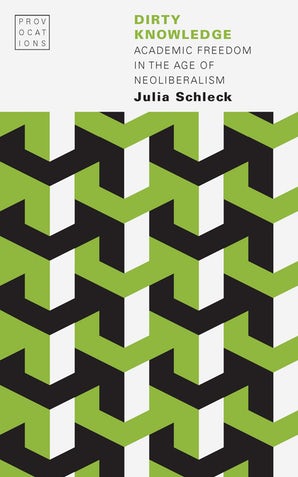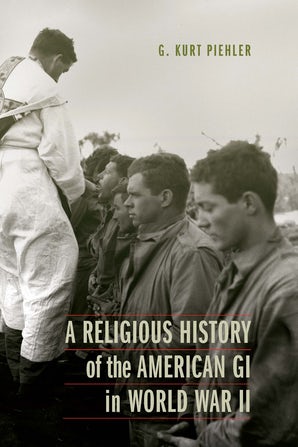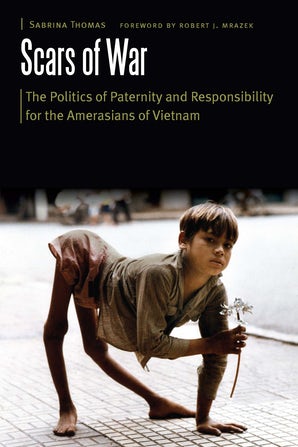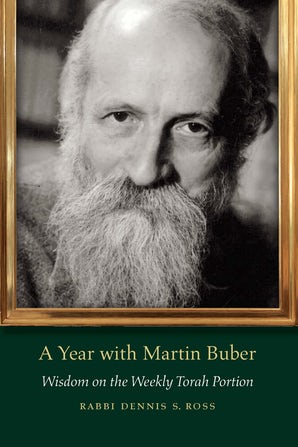Here are the UNP books the Clearinghouse received in November and December 2021:
Borrowing From Our Foremothers : Reexamining the Women’s Movement through Material Culture by Amy Helene Forss
Borrowing from Our Foremothers offers a panorama of women’s struggles through artifacts to establish connections between the generations of women’s right activists. In a thorough historical retelling of the women’s movement from 1848 to 2017, Amy Helene Forss focuses on items borrowed from our innovative foremothers, including cartes de visite, clothing, gavels, sculptures, urns, service pins, and torches.
Framing the material culture items within each era’s campaigns yields a wider understanding of the women’s metanarrative. Studded with relics and ninety-nine oral histories from such women as Rosalynn Carter to Pussyhat Project cocreator Krista Suh, this book contributes an important and illuminating analysis necessary for understanding the development of feminism as well as our current moment.
Cinematic Comanches : The Lone Ranger in the Media Borderlands by Dustin Tahmahkera ; Series: Indigenous Films
For centuries Comanches have captivated imaginations. Yet their story in popular accounts abruptly stops with the so-called fall of the Comanche empire in 1875, when Quanah Parker led Comanches onto the reservation in southwestern Oklahoma. In Cinematic Comanches, the first tribal-specific history of Comanches in film and media, Parker descendant Dustin Tahmahkera examines how Comanches represent themselves and are represented by others in recent media. Telling a story of Comanche family and extended kin and their relations to film, Tahmahkera reframes a distorted and defeated history of Comanches into a vibrant story of cinematic traditions, agency, and cultural continuity.
Co-starring a long list of Comanche actors, filmmakers, consultants, critics, and subjects, Cinematic Comanches moves through the politics of tribal representation and history to highlight the production of Comanchería cinema. From early silent films and 1950s Westerns to Disney’s The Lone Ranger and the story of how Comanches captured its controversial Comanche lead Johnny Depp, Tahmahkera argues that Comanche nationhood can be strengthened through cinema. Tahmahkera’s extensive research includes interviews with elder LaDonna Harris, who adopted Depp during filming in one of the most contested films in recent Indigenous cinematic history. In the fragmented popular narrative of the rise and fall of Comanches, Cinematic Comanches calls for considering mediated contributions to the cultural resurgence of Comanches today.
The Complete Letters of Henry James, 1884-1886, Volume 2 Edited by Michael Anesko and Greg W. Zacharias, Katie Sommer, Associate Editor ; Series: The Complete Letters of Henry James
This second volume of The Complete Letters of Henry James, 1884–1886 contains 156 letters, of which 111 are published for the first time, written from December 24, 1885, to December 31, 1886. These letters mark Henry James’s ongoing efforts to care for his sister, develop his work, strengthen his professional status, build friendships, engage timely political and economic issues, and maximize his income. James details work on his midcareer novel The Princess Casamassima and announces plans for The Tragic Muse. This volume opens with James’s engagement with friends in Britain and France and concludes with his arrival in Italy for a six-month visit.
Country of the Cursed and the Driven : Slavery and the Texas Borderlands by Paul Barba
In eighteenth- and nineteenth-century Texas—a hotly contested land where states wielded little to no real power—local alliances and controversies, face-to-face relationships, and kin ties structured personal dynamics and cross-communal concerns alike. Country of the Cursed and the Driven brings readers into this world through a sweeping analysis of Hispanic, Comanche, and Anglo-American slaving regimes, illuminating how slaving violence, in its capacity to bolster and shatter families and entire communities, became both the foundation and the scourge, the panacea and the curse, of life in the borderlands.
As scholars have begun to assert more forcefully over the past two decades, slavery was much more diverse and widespread in North America than previously recognized, engulfing the lives of Native, European, and African descended people across the continent, from the Atlantic to the Pacific and from Canada to Mexico. Paul Barba details the rise of Texas’s slaving regimes, spotlighting the ubiquitous, if uneven and evolving, influences of colonialism and anti-Blackness.
By weaving together and reframing traditionally disparate historical narratives, Country of the Cursed and the Driven challenges the common assumption that slavery was insignificant to the history of Texas prior to Anglo American colonization, arguing instead that the slavery imported by Stephen F. Austin and his colonial followers in the 1820s found a comfortable home in the slavery-stained borderlands, where for decades Spanish colonists and their Comanche neighbors had already unleashed waves of slaving devastation.
Cree and Christian : Encounters and Transformations by Clinton N. Westman
Cree and Christian develops and applies new ethnographic approaches for understanding the reception and indigenization of Christianity, particularly through an examination of Pentecostalism in northern Alberta. Clinton N. Westman draws on historical records and his own long-term ethnographic research in Cree communities to explore questions of historical change, cultural continuity, linguistic practices in ritual, and the degree to which Indigenous identity is implicated by Pentecostal commitments. Such complexity calls for constant negotiation and improvisation, key elements of Pentecostal worship and speech strategies that have been compared to jazz modes.
The historical sweep of Cree and Christian considers the dynamics of Pentecostal conversion in relation to the strengths and weaknesses of other denominations and the underlying foundation of Cree cosmological worldviews. Pentecostalism has remained open to recognizing the power of spirits while also benefiting from its own essential flexibility. Pentecostals often seek to gain a degree of temporal and spiritual autonomy and authority that may not have seemed possible under previous Christian practices or Cree traditions.
Cree and Christian is the first book to provide a fully historicized account of Indigenous Pentecostalism, connecting contemporary religious practices and pluralism to historical Pentecostal, Evangelical, Catholic, and mainstream Protestant missions since the nineteenth century. By tracing religious practices and discourses since the 1890s, Westman paints a picture of the transformations and encounters from the earliest conversions (and resistance) to today’s pluralistic, mediatized, and bilingual religious landscape.
Dervish Dust : The Life and Words of James Coburn by Robyn L. Coburn
Dervish Dust is the authorized biography of “cool cat” actor James Coburn, covering his career, romances, friendships, and spirituality. Thoroughly researched with unparalleled access to Coburn’s friends and family, the book’s foundation is his own words in the form of letters, poetry, journals, interviews, and his previously unpublished memoirs, recorded in the months before his passing.
Dervish Dust details the life of a Hollywood legend that spanned huge changes in the entertainment and filmmaking industry. Coburn grew up in Compton after his family moved from Nebraska to California during the Great Depression. His acting career began with guest character roles in popular TV series such as The Twilight Zone, Bonanza, and Rawhide. In the 1960s Coburn was cast in supporting roles in such great pictures as The Magnificent Seven, Charade, and The Great Escape, and he became a leading man with the hit Our Man Flint. In 1999 Coburn won an Academy Award for his performance in Affliction. Younger viewers will recognize him as the voice of Henry Waternoose, the cranky boss in Monsters, Inc., and as Thunder Jack in Snow Dogs.
An individualist and deeply thoughtful actor, Coburn speaks candidly about acting, show business, people he liked, and people he didn’t, with many behind-the-scenes stories from his work, including beloved classics, intellectually challenging pieces, and less well-known projects. His films helped dismantle the notorious Production Code and usher in today’s ratings system.
Known for drum circles, playing the gong, and participating in LSD research, Coburn was New Age before it had a name. He brought his motto, Go Bravely On, with him each time he arrived on the set in the final years of his life, when he did some of his best work, garnering the admiration of a whole new generation of fans.
Dirty Knowledge : Academic Freedom in the Age of Neoliberalism by Julia Schleck ; Series: Provocations
Dirty Knowledge explores the failure of traditional conceptions of academic freedom in the age of neoliberalism. While examining and rejecting the increasing tendency to view academic freedom as a form of free speech, Julia Schleck highlights the problem of basing academic freedom on employment protections like tenure at a time when such protections are being actively eliminated through neoliberalism’s preference for gig labor. The argument traditionally made for such protections is that they help produce knowledge “for the public good” through the protected isolation of the Ivory Tower, where “pure” knowledge is sought and disseminated.
In contrast, Dirty Knowledge insists that academic knowledge production is and has always been “dirty,” deeply involved in the debates of its time and increasingly permeated by outside interests whose financial and material support provides some research programs with significant advantages over others. Schleck argues for a new vision of the university’s role in society as one of the most important forums for contending views of what exactly constitutes a societal “good,” warning that the intellectual monoculture encouraged by neoliberalism poses a serious danger to our collective futures and insisting on deliberate, material support for faculty research and teaching that runs counter to neoliberal values.
The Forgotten Botanist : Sara Plummer Lemmon’s Life of Science and Art by Wynne Brown
The Forgotten Botanist is the account of an extraordinary woman who, in 1870, was driven by ill health to leave the East Coast for a new life in the West—alone. At thirty-three, Sara Plummer relocated to Santa Barbara, where she taught herself botany and established the town’s first library. Ten years later she married botanist John Gill Lemmon, and together the two discovered hundreds of new plant species, many of them illustrated by Sara, an accomplished artist. Although she became an acknowledged botanical expert and lecturer, Sara’s considerable contributions to scientific knowledge were credited merely as “J.G. Lemmon & wife.”
The Forgotten Botanist chronicles Sara’s remarkable life, in which she and JG found new plant species in Arizona, California, Oregon, and Mexico and traveled throughout the Southwest with such friends as John Muir and Clara Barton. Sara also found time to work as a journalist and as an activist in women’s suffrage and forest conservation.
The Forgotten Botanist is a timeless tale about a woman who discovered who she was by leaving everything behind. Her inspiring story is one of resilience, determination, and courage—and is as relevant to our nation today as it was in her own time.
Marianne Is Watching : intelligence, Counterintelligence, and the Origins of the French Surveillance State by Deborah Bauer ; Series: Studies in War, Society, and the Military
Professional intelligence became a permanent feature of the French state as a result of the army’s June 8, 1871, reorganization following France’s defeat in the Franco-Prussian War. Intelligence practices developed at the end of the nineteenth century without direction or oversight from elected officials, and yet the information gathered had a profound influence on the French population and on pre–World War I Europe more broadly.
In Marianne Is Watching Deborah Bauer examines the history of French espionage and counterespionage services in the era of their professionalization, arguing that the expansion of surveillance practices reflects a change in understandings of how best to protect the nation. By leading readers through the processes and outcomes of professionalizing intelligence in three parts—covering the creation of permanent intelligence organizations within the state; the practice of intelligence; and the place of intelligence in the public sphere—Bauer fuses traditional state-focused history with social and cultural analysis to provide a modern understanding of intelligence and its role in both state formation and cultural change.
With this first English-language book-length treatment of the history of French intelligence services in the era of their inception, Bauer provides a penetrating study not just of the security establishment in pre–World War I France but of the diverse social climate it nurtured and on which it fed.
The Power of Scenery : Frederick Law Olmstead and the Origin of National Parks ; by Dennis Drabelle
Wallace Stegner called national parks “the best idea we ever had.” As Americans celebrate the 150th anniversary of Yellowstone, the world’s first national park, a question naturally arises: where did the idea for a national park originate? The answer starts with a look at pre-Yellowstone America. With nothing to put up against Europe’s cultural pearls—its cathedrals, castles, and museums—Americans came to realize that their plentitude of natural wonders might compensate for the dearth of manmade attractions. That insight guided the great landscape architect Frederick Law Olmsted as he organized his thoughts on how to manage the wilderness park centered on Yosemite Valley, a state-owned predecessor to the national park model of Yellowstone. Haunting those thoughts were the cluttered and carnival-like banks of Niagara Falls, which served as an oft-cited example of what should not happen to a spectacular natural phenomenon.
Olmsted saw city parks as vital to the pursuit of happiness and wanted them to be established for all to enjoy. When he wrote down his philosophy for managing Yosemite, a new and different kind of park, one that preserves a great natural site in the wilds, he had no idea that he was creating a visionary blueprint for national parks to come. Dennis Drabelle provides a history of the national park concept, adding to our understanding of American environmental thought and linking Olmsted with three of the country’s national treasures. Published in time to celebrate the 150th anniversary of Yellowstone National Park on March 1, 2022, and the 200th birthday of Frederick Law Olmsted on April 26, 2022, The Power of Scenery tells the fascinating story of how the national park movement arose, evolved, and has spread around the world.
A Religious history of the American GI in World War II by G. Kurt Piehler ; Series: Studies in War, Society, and the Military
A Religious History of the American GI in World War II breaks new ground by recounting the armed forces’ unprecedented efforts to meet the spiritual needs of the fifteen million men and women who served in World War II. For President Franklin D. Roosevelt and many GIs, religion remained a core American value that fortified their resolve in the fight against Axis tyranny. While combatants turned to fellow comrades for support, even more were sustained by prayer. GIs flocked to services, and when they mourned comrades lost in battle, chaplains offered solace and underscored the righteousness of their cause. This study is essential reading for anyone seeking to understand the social history of the American GI during World War II.
Drawing on an extensive range of letters, diaries, oral histories, and memoirs, G. Kurt Piehler challenges the conventional wisdom that portrays the American GI as a nonideological warrior. American GIs echoed the views of FDR, who saw a Nazi victory as a threat to religious freedom and recognized the antisemitic character of the regime. Official policies promoted a civil religion that stressed equality between Protestantism, Roman Catholicism, and Judaism. Many chaplains embraced this tri-faith vision and strived to meet the spiritual needs of all servicepeople regardless of their own denomination. While examples of bigotry, sectarianism, and intolerance remained, the armed forces fostered the free exercise of religion that promoted a respect for the plurality of American religious life among GIs.
Scars of War : The Politics of Paternity and Responsibility for the Amerasians of Vietnam by Sabrina Thomas ; Borderlands and Transcultural Studies
Scars of War examines the decisions of U.S. policymakers denying the Amerasians of Vietnam—the biracial sons and daughters of American fathers and Vietnamese mothers born during the Vietnam War—American citizenship. Focusing on the implications of the 1982 Amerasian Immigration Act and the 1987 Amerasian Homecoming Act, Sabrina Thomas investigates why policymakers deemed a population unfit for American citizenship, despite the fact that they had American fathers.
Thomas argues that the exclusion of citizenship was a component of bigger issues confronting the Nixon, Ford, Carter, and Reagan administrations: international relationships in a Cold War era, America’s defeat in the Vietnam War, and a history in the United States of racially restrictive immigration and citizenship policies against mixed-race persons and people of Asian descent.
Now more politically relevant than ever, Scars of War explores ideas of race, nation, and gender in the aftermath of the Vietnam War. Thomas exposes the contradictory approach of policymakers unable to reconcile Amerasian biracialism with the U.S. Code. As they created an inclusionary discourse deeming Amerasians worthy of American action, guidance, and humanitarian aid, federal policymakers simultaneously initiated exclusionary policies that designated these people unfit for American citizenship.
Time in the Wilderness : the formative years of John “Black Jack” Pershing in the American West by Time McNeese
Most Americans familiar with General John J. “Black Jack” Pershing know him as the commander of American Expeditionary Forces in Europe during the latter days of World War I. But Pershing was in his late fifties by then. Pershing’s military career began in 1886, with his graduation from West Point and his first assignments in the American West as a horsebound cavalry officer during the final days of Apache resistance in the Southwest, where Arizona and New Mexico still represented a frontier of blue-clad soldiers, Native Americans, cowboys, rustlers, and miners.
But the Southwest was just the beginning of Pershing’s West. He would see assignments over the years in the Dakotas, during the Ghost Dance uprising and the battle of Wounded Knee; a posting at Montana’s Fort Assiniboine; and, following his years in Asia, a return to the West with a posting at the Presidio in San Francisco and a prolonged assignment on the Mexican-American border in El Paso, which led to his command of the Punitive Expedition, tasked with riding deep into Northern Mexico to capture the pistolero Pancho Villa.
During those thirty years from West Point to the Western Front, Pershing had a colorful and varied military career, including action during the Spanish-American War and lengthy service in the Philippines. Both were new versions of the American frontier abroad, even as the frontier days of the American West were closing.
All of Pershing’s experiences in the American West prepared him for his ultimate assignment as the top American commander during the Great War. If the American frontier and, more broadly, the American West provided a cauldron in which Americans tested themselves during the nineteenth century, they did the same for John Pershing. His story was a historical Western.
A Year With Martin Buber : Wisdom on the Weekly Torah Portion by Rabbi Dennis S. Ross ; Series: JPS Daily Inspiration
The teachings of the great twentieth-century Jewish thinker Martin Buber empower us to enter a spiritual dimension that often passes unnoticed in the daily routine. In A Year with Martin Buber, the first Torah commentary to focus on his life’s work, we experience the fifty-four weekly Torah portions and eleven Jewish holidays through Buber’s eyes.
While best known for the spiritual concept of the I-Thou relationship between people, Buber graced us with other fundamentals, including Over Against, Afterglow, Will and Grace, Reification, Inclusion, and Imagine the Real. And his life itself—including his defiance of the Nazis, his call for Jewish-Arab reconciliation, and his protest of Adolf Eichmann’s execution—modeled these teachings in action.
Rabbi Dennis S. Ross demonstrates Buber’s roots in Jewish thought and breaks new ground by explaining the broader scope of Buber’s life and work in a clear, conversational voice. He quotes from the weekly Torah portion; draws lessons from Jewish commentators; and sets Buber’s related words in context with Buber’s remarkable life story, Hasidic tales, and writing. A wide variety of anecdotal illustrations from Buber as well as the author’s life encourages each of us to “hallow the everyday” and seek out spirituality “hiding in plain sight.”
**Synopses courtesy of University of Nebraska Press.

